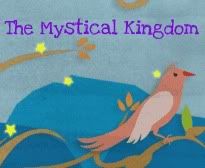In the Head - the light of Thinking,
In the Limbs - the strength of Will
Weaving of radiant Light,
Strength of the Weaving,
Light of the surging Strength;
Lo, this is Man!
You do not go away feeling depleted, but rather refreshed and invigorated.
Let me share something that I strongly believe: Next to the power of the universe and it's life flow, the power of thought is the most powerful "tool" we humans have been given. We need to keep our thoughts positive and focused on what we HOPE to become. You become what you think about. Everything in the world is THOUGHT MANIFESTED.
The mindset you have is what will cause you to feel drained or to feel refreshed. When I get burned out - and it almost always coincides with the times they get all wound up and "trouble making" (lots of energy flowing without an outlet) we go outside and talk to the earth.
This ALWAYS seems to center and bring them back into balance. I feel myself getting agitated because they are no longer playing creatively and they just get into that too much energy but unfocused play where they will end up being destructive, too rough, negative, etc... I stand up and say something like "oh, I feel some strange energy in the house right now" then I look at the clock and say "have we been inside all of this time?" I start to quickly clean up whatever I am doing and I head outside... They model and follow. Outside I begin to talk to the earth, the trees, the birds, the flowers...
"Oh little flowers, I could feel you calling me outside. It's much to dark in the house and the air is not as fresh as it is out here. Thank you for reminding me to come and look at your beauty. What a lovely shade of violet you have become. Have many butterflies and bees come calling today? What's that? The tree needs a hug? My goodness, I will hug the tree! I like to hug all of the trees because they help my body to breathe! I feel better when I hug the tree too because I know that the tree is my brother. In spirit, all of my great great grandmothers and fathers who have passed away, and who were buried in the earth became a part of this wise old tree... This tree holds the secrets of the generations and I am blessed that I have strong arms to give the tree a great big hug. Oooohhh. can you smell the moss today? It smells like it's growing, the heavy rain last night must have really saturated the moss. (kneeling) Oh my goodness, look at this little rollie-pollie worm - pick it up gently, this is its new home...."
Each and every time I do this my children do a complete turn around from the afternoon energy and come straight into balance.
In Reiki, we work to become grounded and I think what happens in the afternoon is that we tend to come apart and "float" our energies. All we really need is to ground ourselves again. Walking barefoot on the grass and or hugging a tree really does the trick in my family. It's quick, it's simple and it brings us back into a calm center, always. As a matter of fact, I cannot recall a time when this didn't work.
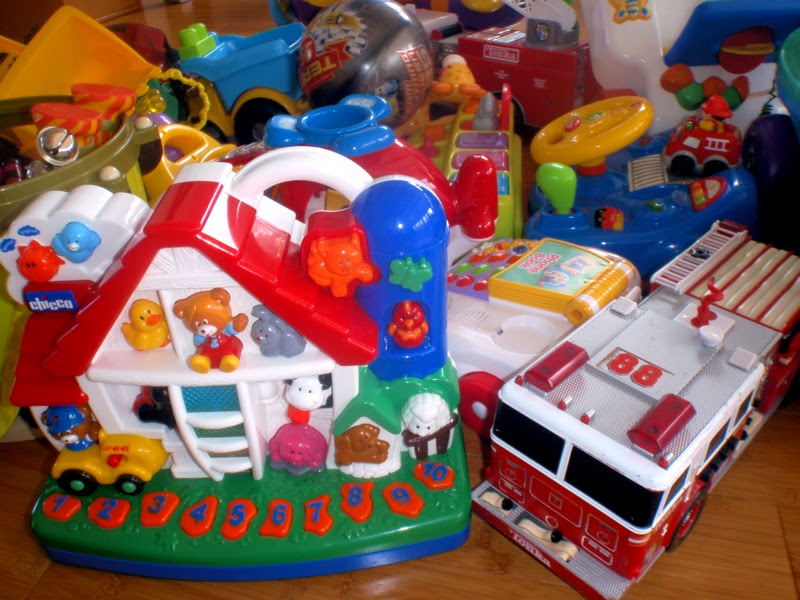



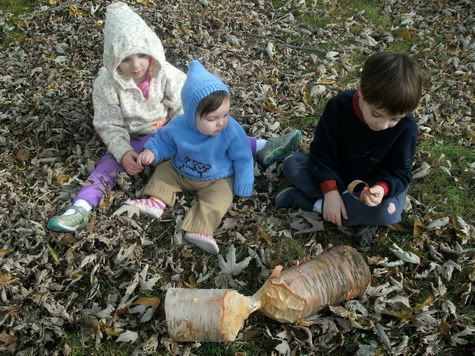
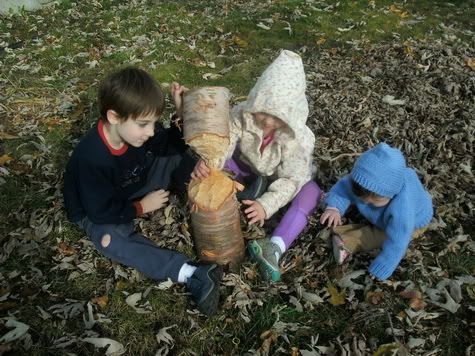
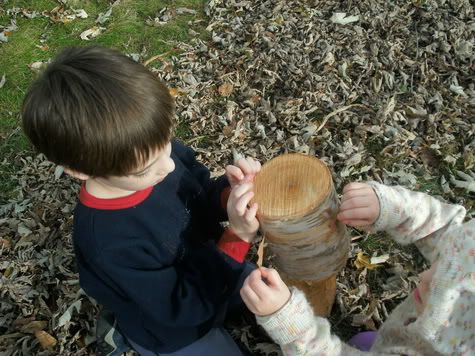

 Wood is another example. It comes from a living, growing organism and has so much potential. Has this wood been carved or "decorated" by the creatures of the forest? What sort of tree did this wood come from? Imagine that two pieces of wood will never be exactly the same and your child can feel this and sense it when holding this toy. What a lesson of gratefulness for this piece of wood – which is here play with. What a wonderful discovery when playing outside your child finds this wonderful toy all by him or herself… as it was meant to be! Your child will carry this wood as a parcel, build with it as a block, cradle and hold it as a baby. This piece of wood can be turned into just about anything in the imagination of your child. Perhaps grandfather can carve this little wood into an animal friend, or a gnome to return to the garden.
Wood is another example. It comes from a living, growing organism and has so much potential. Has this wood been carved or "decorated" by the creatures of the forest? What sort of tree did this wood come from? Imagine that two pieces of wood will never be exactly the same and your child can feel this and sense it when holding this toy. What a lesson of gratefulness for this piece of wood – which is here play with. What a wonderful discovery when playing outside your child finds this wonderful toy all by him or herself… as it was meant to be! Your child will carry this wood as a parcel, build with it as a block, cradle and hold it as a baby. This piece of wood can be turned into just about anything in the imagination of your child. Perhaps grandfather can carve this little wood into an animal friend, or a gnome to return to the garden. 